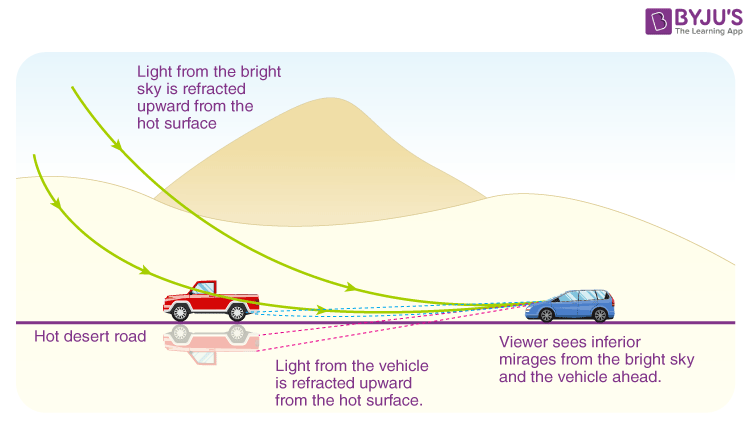Exploring The Phenomenon Of The Glossy Mirage

Table of Contents
The Psychology Behind the Glossy Mirage
Our attraction to glossy visuals isn't merely aesthetic; it's deeply rooted in psychology. Glossiness is often subconsciously associated with luxury, wealth, and high quality. Our brains process light reflection instinctively, associating a highly polished surface with cleanliness, newness, and therefore, desirability. This is a powerful visual cue that marketers skillfully exploit.
- The perceived association of gloss with cleanliness and newness: A shiny car looks cleaner than a matte one; polished furniture appears more pristine.
- The impact of gloss on perceived value and desirability of products: Glossy packaging often commands higher prices, even if the product itself is identical to a matte-packaged counterpart.
- The potential for gloss to distract from underlying flaws or issues: The dazzling shine can mask imperfections, leading consumers to overlook potential problems.
Recognizing the Glossy Mirage in Different Contexts
The glossy mirage manifests in diverse contexts, each with its unique implications.
Website Design and the Glossy Mirage
Overly polished websites, while visually appealing initially, can hinder usability and overshadow content. Excessive shine effects, overly bright colors, and distracting animations create a digital mirage, diverting attention from the core purpose of the site – providing information and facilitating interaction. A balance between aesthetics and functionality is crucial.
- Examples: Websites with excessive reflective surfaces, overwhelming animations, and a lack of clear navigation.
- Importance of balance: Prioritize clear communication and user experience over solely pursuing a "glossy" look.
Image Editing and the Glossy Mirage
Image editing software allows for extensive manipulation, creating unrealistically glossy effects. This raises significant ethical considerations, particularly when used to create unrealistic beauty standards or misrepresent products. Photoshopped images can mislead consumers, contributing to a distorted perception of reality.
- Examples: Heavily edited product photos that exaggerate features, airbrushed celebrity images.
- Impact of unrealistic beauty standards: The pervasive use of glossy, unrealistic images contributes to body image issues and dissatisfaction.
Marketing and Advertising's Use of the Glossy Mirage
Marketers frequently leverage glossy visuals to sell products and services. While effective when used judiciously, excessive gloss can be misleading. Transparency and honesty are paramount.
- Examples: Highly polished product photography, glossy magazine advertisements, sleek packaging design.
- Importance of transparency: Consumers should be aware of any significant alterations or enhancements made to visuals used in marketing materials.
Navigating the Glossy Mirage: Tips for Critical Consumption
To avoid being misled by the glossy mirage, cultivate a critical eye and question overly-polished visuals.
- Look beyond the surface: Consider the substance and functionality; is it impressive for reasons beyond just its appearance?
- Seek diverse viewpoints and sources of information: Don't rely on a single source, especially when visual appeal is heavily emphasized.
- Be aware of the techniques used to create glossy effects: Understand how these effects are achieved, and how they might be used to mask shortcomings.
- Question the authenticity of images and claims: Be skeptical of images that look too perfect or claims that seem too good to be true.
Beyond the Shine: Understanding and Avoiding the Glossy Mirage
The glossy mirage, while visually appealing, can be deceptive. By understanding its psychological impact and recognizing its presence in various media, we can navigate the digital landscape more critically. Cultivating media literacy and questioning polished aesthetics are crucial steps in avoiding misleading information and making informed decisions. Practice identifying glossy mirages, learn to recognize digital mirages, and cultivate a more discerning eye when encountering overly polished visuals; only then can you truly appreciate authentic quality and substance, avoiding the pitfalls of the glossy mirage and its variations.

Featured Posts
-
 Clipper Late Rally Falls Short Against Cavaliers
May 07, 2025
Clipper Late Rally Falls Short Against Cavaliers
May 07, 2025 -
 Anthony Edwards Suspension How Much Money Did The Timberwolves Star Lose
May 07, 2025
Anthony Edwards Suspension How Much Money Did The Timberwolves Star Lose
May 07, 2025 -
 Nba Player Anthony Edwards Facing Backlash Over Alleged Abortion Texts
May 07, 2025
Nba Player Anthony Edwards Facing Backlash Over Alleged Abortion Texts
May 07, 2025 -
 Crypto Whales Bet Big 5880 Rally Predicted For New Xrp Altcoin
May 07, 2025
Crypto Whales Bet Big 5880 Rally Predicted For New Xrp Altcoin
May 07, 2025 -
 Navigating The Deception Of The Glossy Mirage
May 07, 2025
Navigating The Deception Of The Glossy Mirage
May 07, 2025
